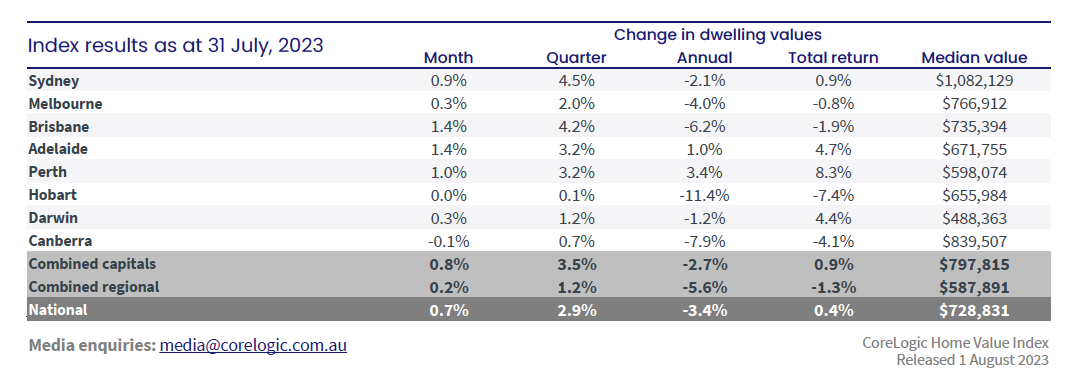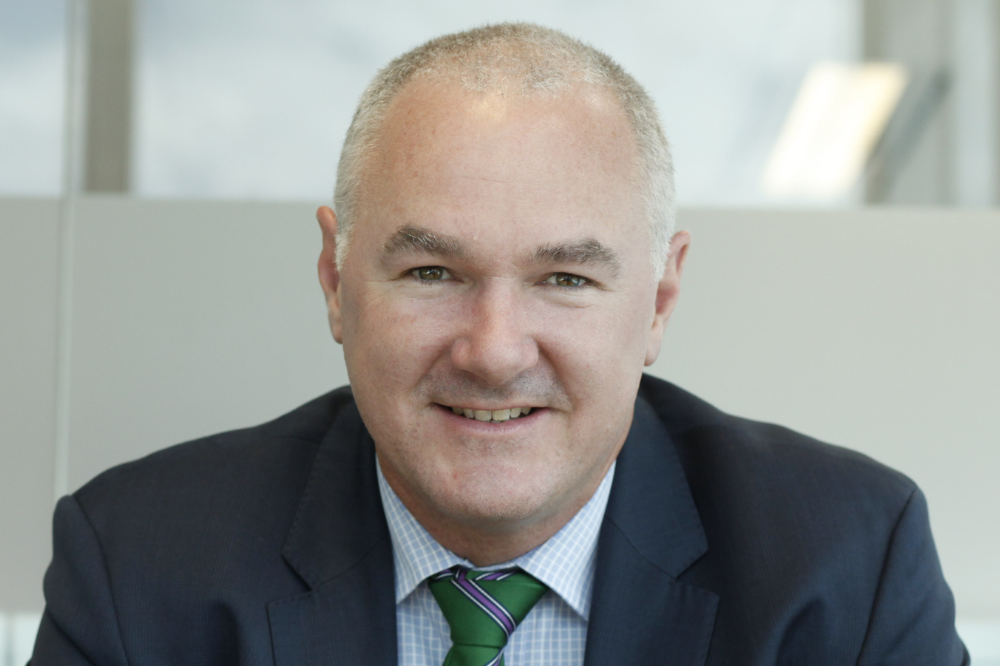Australian dwelling prices increased 0.7% in July, marking the fifth consecutive month of housing value recovery, CoreLogic has reported.
Since bottoming out in February, CoreLogic’s national Home Value Index surged 4.1%, after a 9.1% decline from record highs in April 2022.
Nationally, home values were still lower by -5.3% compared to the April 2022 peak, with only Perth, Adelaide, and Regional South Australia hitting a new cyclical high in dwelling values through July.
Housing values have continued to record a broad-based increase, but the pace of growth has lost its momentum over the past two months, easing from 1.2% in May.
Tim Lawless (pictured above), CoreLogic research director, noted that the biggest reduction in growth has occurred in Sydney.
“After leading the upswing, the monthly pace of growth in Sydney housing values has halved from a recent high of 1.8% in May to 0.9% in July,” Lawless said. “Sydney has also seen a significant rise in the number of fresh listings added to the market, 9.9% higher than the same time last year and 18% above the previous five-year average. An increased flow of new listings provides more choice and may be working to reduce some of the urgency felt among prospective buyers.”
Leading the pace of gains across capitals in July were Brisbane and Adelaide, where housing values both rose 1.4%. Despite the increase in new listings in these two cities, the number remained well below levels from a year ago and the previous five-year average.
The only capital city to record a decline in July was Canberra, where values dropped -0.1%, while Hobart values were unchanged.
The pace of value growth has slowed down, mainly due to an easing in gains across the upper quartile of the market. The upper quartile of the combined capitals index saw growth contracting from 1.8% in May to 0.7% in July. The lower quartile and broad middle of the market, meanwhile, remained resilient in July, up 1% and 0.9%, respectively, after a smaller, but more consistent rate of growth over previous months.
“Some resilience in growth across the middle and more affordable end of the market aligns with housing finance data which has shown a stronger bounce back in the value of lending to first-home buyers and investors over recent months,” Lawless said.
“These segments tend to be more active across the middle to lower end of the pricing range where competition to purchase a home may be more intense.
“Premium housing markets tend to lead the cycles, so the slowdown in the pace of growth could be a sign of a broader easing in the pace of growth over the coming months.”
The regions have continued to lag the capitals when it comes to housing values, with the combined regional index lifting 0.2% in July compared with a 0.8% rise across the combined capitals index. Over the same period, every rest-of-state region posted a smaller change in dwelling values compared to the capital city, reflecting milder housing demand across regional Australia as demographic patterns normalise.
Over the three months ending July, the region that saw the largest increase in housing values (based on SA4 regions) has been the Gold Coast (4%), followed by the South East region of Tasmania (3.1%), and the Newcastle/Lake Macquarie region (3%). On the other end of the spectrum, the areas of regional Victoria saw the weakest conditions over the quarter, with Bendigo (-3.7%) posting the largest fall, followed by Shepparton (-2.3%), and the Warrnambool/South West region (-2.3%), CoreLogic reported.

Use the comment section below to tell us how you felt about this.


